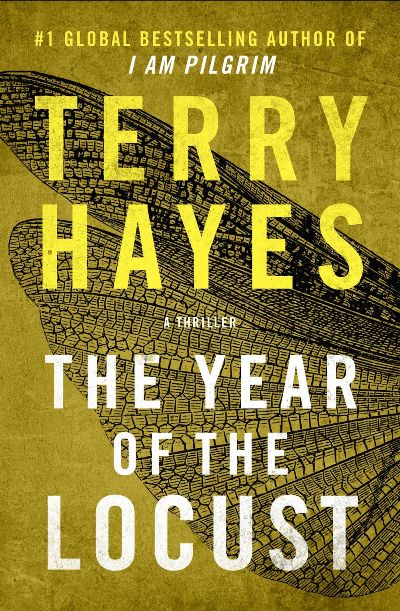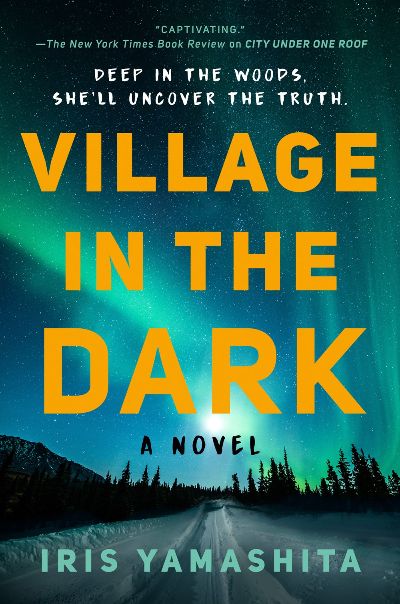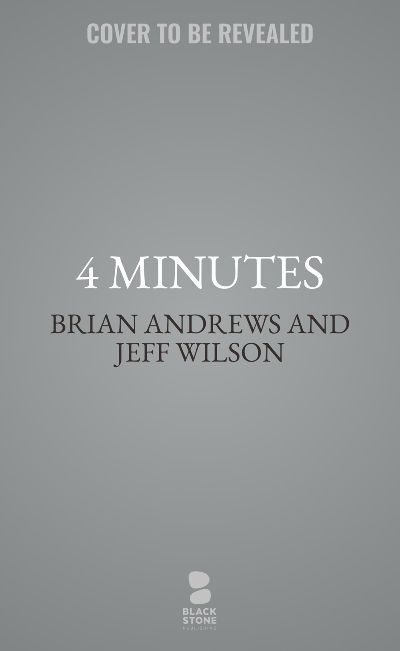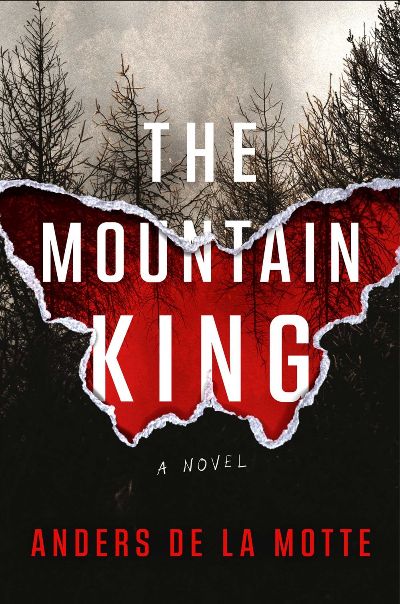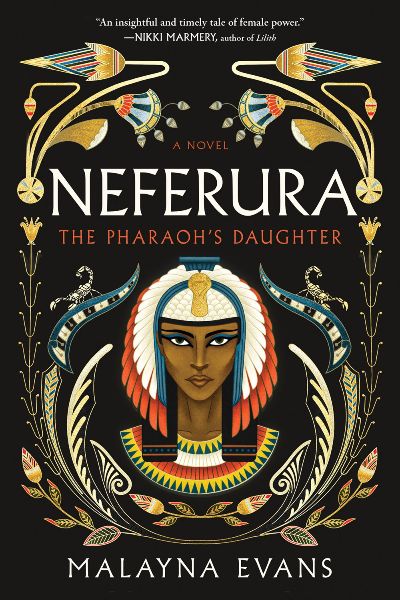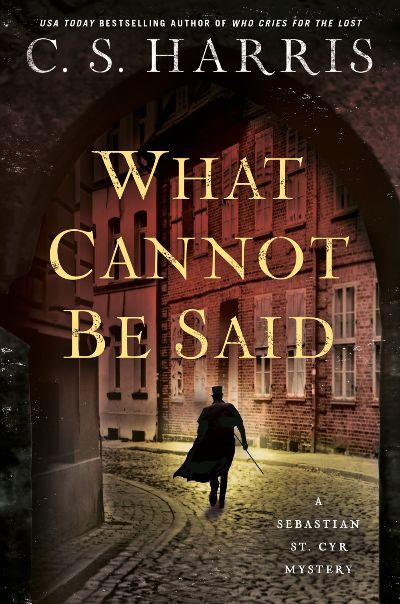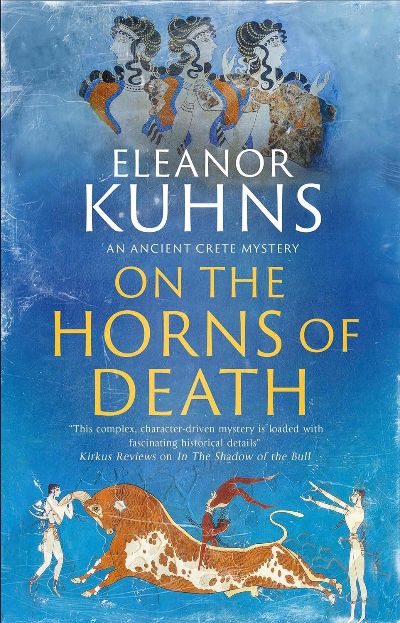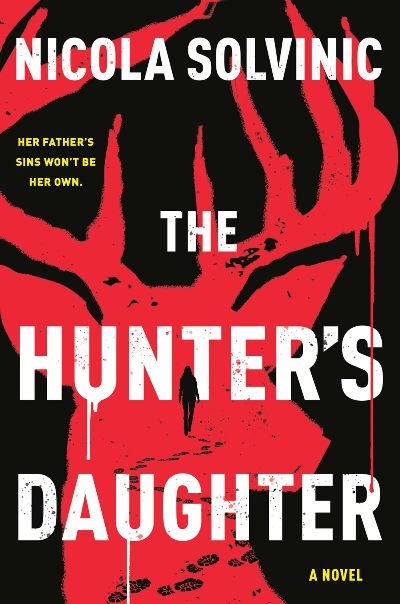The eagerly awaited new thriller from the I Am Pilgrim author, Terry Hayes, delivers an immersive experience. At 800 pages, it takes a slow-build approach and provides a meandering layout to the storytelling, creating an almost memoir-like atmosphere. An alphabet-agency asset learns of an upcoming attack that has shattering implications. Kane, a spy in the Denied Access Area (also known as ultra-top-secret operations), is assigned to get the information and stop the attack. All he knows is that it will be spectacular and will happen over Thanksgiving week. The assignment goes in unexpected ways, and Kane will put at risk the people he cares about, along with dealing with mental and physical scars, to achieve his objective. The finale combines The Terminator and American Graffiti. Hayes has created an unconventional CIA thriller, but all of the elements work, and readers who loved I Am Pilgrim will find that this one was worth the wait. Don’t let the length intimidate you from reading this book. Hayes has another guaranteed bestseller on his hands.
Review
Here’s a trend out of the U.K.: fun-loving, female serial killers. From doing away with the relatives (Mackie’s How to Kill Your Family) to offing abusive husbands (Casale’s The Best Way to Bury Your Husband) British women are ignoring old school, female solutions like poison or a tumble down the staircase and packing some heat, or, in the case of You’d Look Better as a Ghost, relying on a hammer to the back of the head. Claire, our serial killer and hero, is always planning her next kill, typically of someone who crossed her, starting back in childhood with her murder of her mother, who made Joan Crawford seem like Mother Theresa. Today the 30ish Claire is mourning (a real emotion!) her father’s death, while plotting the murder of Lucas, an arts administrator who rejected one of her paintings. But no sooner is Lucas diced and planted in the back garden—it makes you think twice about the Chelsea Flower Show—when one of the ladies in Claire’s weekly bereavement group let’s on that she knows all about Claire’s special hobby, and if she wants to live, Claire has to give in to blackmail. Is threatening a part-time, but highly successful, serial killer ever a good idea? That would be no. Witty and sophisticated, funny and fast-paced, this dark masterpiece is pure pleasure.
Readers last visited the remote Alaskan town of Point Mettier in Yamashita’s debut, City Under One Roof, (Please note-the link is to a prior firstCLUE review) a title that perfectly describes the town that consists of a single apartment building with 205 residents, stores, and even a bar inside. This time, we are reintroduced to Cara Kennedy, a former Anchorage PD detective, as she’s having her husband’s and son’s bodies exhumed. She can’t stop suspecting foul play even though everyone is fed up that she won’t accept that they died of a hiking accident—she’s even lost her job because of her suspicions. But she’s now found a photo of her dead loved ones on a gang member’s phone. There’s no explanation for it, and her investigation is forcing her to visit the remote village of Chugach, with a trip through Point Mettier the only way in. Other wronged women are simultaneously facing pain and their paths are destined to meet: Ellie, owner of the Cozy Condo Inn in Point Mettier, gets a devastating call just as Kennedy’s on her way. We also meet Mia, a former Chugach resident who’s trying the outside world for the first time, meeting fears yet forging her way. These are fascinating characters and circumstances, and the story that brings them together and sees them struggling against inner demons, and very real danger, is gripping. For readers who enjoy offbeat tales and wilderness thrillers as well as for fans of the author’s debut.
Special Operations Chief Tyler Brooks gets a chance to lead a secret team of operatives in this tense and mind-blowing thriller. The Task Force Omega squad has access to a top-secret device that can move anyone on the team up to 28 days in the future for four minutes, and then they are returned. They cannot change anything they see but can gather intel to research once they return, hopefully stopping the incident from happening. Brooks does not know that a particular op that came together before his recruitment has a soldier with similar skills who is seeking vengeance and who wants Brooks dead. Events swerve drastically when the team jumps into the future and discovers a nuclear-decimated landscape. Can Brooks lead his team to find answers, even with a hidden target on his back? Andrews and Wilson are the best in the business at telling stories involving military operations while emphasizing the human side of warfare. They take a sci-fi concept and make it realistic and believable. 4 Minutes is arguably the best book they have written.
When 19-year-old Smilla Holst, a member of a wealthy local family, and her ex-boyfriend Malik Mansour disappear without a trace, Detective Inspector Leonore Asker expects to lead the investigation as section head at Malmö’s Serious Crime Command. But she is unexpectedly replaced by Jonas Hellman, a rival detective from Stockholm with a personal score to settle, and relegated to the police headquarters’s basement as temporary chief of the Resources Unit. In this obscure department, nicknamed the Department of Lost Souls, odd, cold cases and odd employees linger in obscurity. But as Asker quickly discovers, her new colleagues display unusual talents that come in handy when she probes a strange case involving a model-railway club and the ominous placement of miniature figurines that represent missing people, including the latest two victims. While Hellman pursues a kidnapping angle, Asker becomes convinced that her Resources Unit predecessor, now hospitalized in a coma, was on the trail of a serial killer who preys on urban explorers who wander into abandoned structures like factories and underground military facilities. The best-selling author of “The Game” trilogy launches an exciting, atmospheric crime series that introduces an appealingly smart and tough female protagonist with a troubled backstory in the vein of Stieg Larsson’s Lisbeth Salander, although not quite as edgy. The twisty, spine-tingling mystery that unfolds is creepy and sinister, laced with a touch of dark Scandinavian folklore.
With a doctorate in Egyptology, it would have been easy for Malayna Evans to have fallen down the bottomless hole of historical detail. But instead, this is a beautifully balanced novel, rich in the experiences of life in the backstabbing court of Pharaoh Hatshepsut while also focused on the engaging and ultimately tragic life of her daughter, Neferura, princess and high priestess of Kemet. Neferura lives to support the people, but she is often distracted by court machinations, especially those of her misogynistic half-brother, Thutmose, who wants to end her mother’s rule, become Pharaoh, marry Neferura, and produce an heir. Neferura’s interior thinking is powerfully engaging, and setting the novel largely among women, whose struggles to lead are always under scrutiny, is incredibly refreshing. But Neferura’s own story feels nearly revolutionary: to survive, she befriends the wisewoman, a much-tattooed priestess of sorts, who is in touch with a network of women who devote themselves to supporting Neferura, even to the point of risking their own lives. Add to this several standout characters, such as Neferura’s life-long tutor who helps guide her actions, and you have a cadre ready to protest their princess. Powerful and poignant, this is a treat for fans of historical mysteries.
Atonement and The Secret Garden float to mind as children in an isolated English idyll come upon a frightening scene. Out for a walk, two young brothers find a mother and daughter dead, posed in a way that’s so peaceful it’s sinister. Magistrate Sir Henry Lovejoy, a friend of the series’ main character, Sebastian St. Cyr, is called, and the scene is all too familiar to him: it’s how his wife and daughter were found murdered years before. A man was hanged for that crime. As more killings occur with frightening speed over the coming days, others speculate that a “copyist” is at work while Lovejoy fears that the wrong man was executed. Lady McInnis, the current day’s victim, was politically active, lending an intriguing angle to the story. She lobbied the government to improve the conditions of working children, some of whose sad lives are featured here; a side plot regarding workhouse babies being unscrupulously fostered for pay paints a grim portrait of early 19th-century England. In the end, the social elements and the murder mysteries knit well together to create a satisfying whodunit with a dash of historical fact.
You know those cute programs where kids leave their teddy bear for a library sleepover? This is nothing like that. Instead, staying in the library overnight are student workers who have just completed a tough interview process for the one permanent job on offer in the university’s rare-books department (Jurczyk is mining a setting similar to her 2022 The Department of Rare Books and Special Collections), a toxic workplace if ever there was one. Also attending is non-student Ro, along because he can provide the drug, acid, that will kickstart a ceremony that student Davey has meticulously planned. Davey has invited Ro and five others to re-enact a Greek tradition around the Persephone myth, in which intoxicated pilgrims face either death or the thing they most fear, in order to conquer the fear. The tortured inner voice of narrator Faye, the shyest library employee, is used to wonderful effect by Jurczyk to chronicle a frenzied, terrifying night in a locked room—the library’s basement cage—that starts with a killing. The ending here is a shock, and along the way the author delivers chills that are packed with narcissistic venom and choking claustrophobia. This will be a hit with those who enjoyed Jurczyk’s previous work. If you like myth retellings, try one of the many versions of the Irish Tír na nÓg story, which mirrors elements of the tale of Persephone.
A wonderful sojourn into Ancient Crete of 1450 BC, told through the life of 16-year-old bull leaper Martis. In many ways, Martis is a classic teen, trying to understand the world around her and what her place in it will be. She’s also fiercely independent—training to be a bull leaper without initially telling her mother, for example—and resists many of the traditional female roles, like marriage and motherhood, that her peers are taking up. In this second novel in the series, Martis discovers the corpse of Duzi, one of her fellow bull leapers. He was murdered to look like he was gouged by a bull, when in fact he was knifed and left to die in a bullpen. Martis rebels against the wishes of her mother, as well as those of Tinos, the administrator of Knossos and the High Priestess’s consort, and takes on the investigation into Duzi’s death, a death that is followed by others, all related to the world of the bull leapers. Martis has to move quickly, with little help from the adults around her, to stop the growing violence. Kuhns does a great job of weaving Minoan civilization throughout the book, from religious practices to food preparation, from clothes and make-up to day-to-day life. Young adults will find much to enjoy in this novel as well.
Subterfuge and supernatural elements infuse this dark, absorbing debut. Our protagonist is Midwestern police detective Anna Koray, who’s had a relatively staid career until she makes the mistake of confronting a violent perpetrator without backup. She kills him, but is shot herself in the process. When recovering, she’s required to undertake counseling; at the same time, she pushes herself into the investigation of a serial killer whose horrifying work resembles that of her father, who years ago was executed for his murder of multiple women as sacrifices to a forest god. Both Anna’s colleagues and the doctor she’s in a burgeoning relationship with have no idea that she spent her childhood in thrall to the Forest Strangler. Anna herself doesn’t even have all the details, which were sealed away in her subconscious by a manipulative therapist whom she now sees for the reverse process, setting in motion an emotional and dangerous roller coaster of unraveling secrets and treacherous confrontations. A cold-case podcaster adds a moral dilemma to the exciting tale—when is it better to leave the truth buried? Readers who enjoy a wilderness thriller, such as Elizabeth Hand’s Hokuloa Road or Paul Doiron’s Dead Man’s Wake, will appreciate this story.

